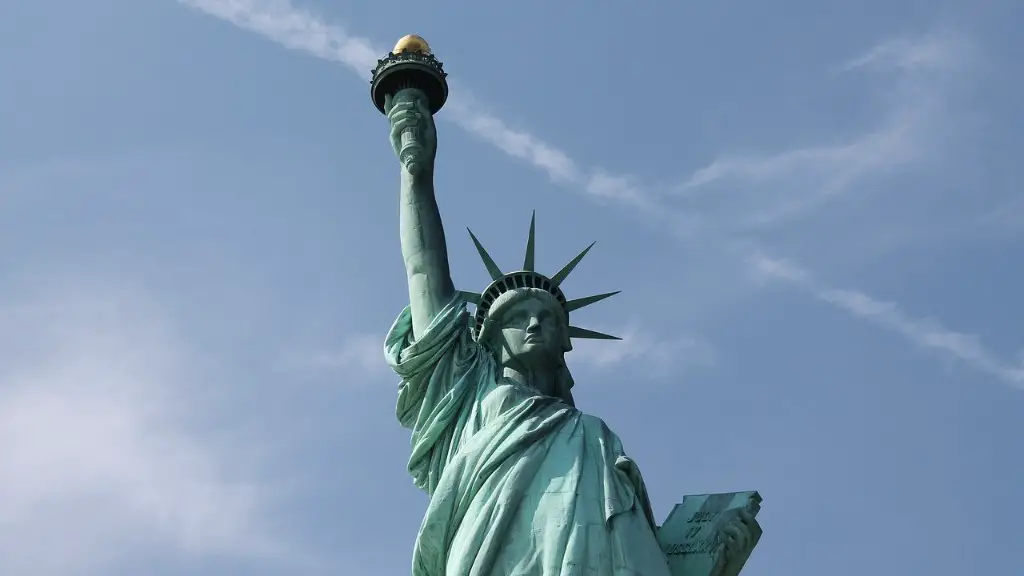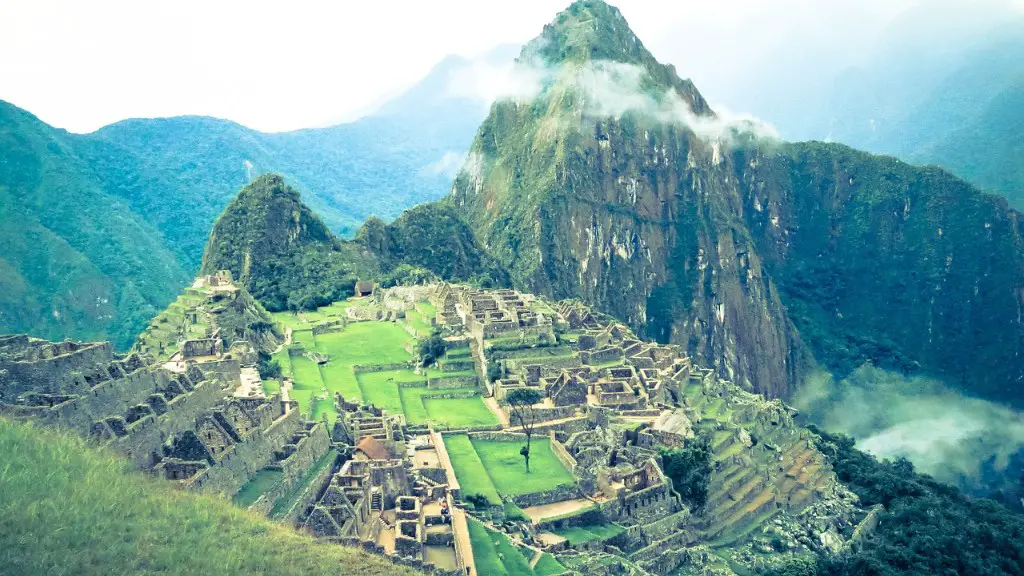Pompeii was an ancient Roman town located in the south of Italy, on the Bay of Naples. It is one of the best-known archaeological sites in the world, thanks to its unique and spectacular ruins left behind after the eruption of Mount Vesuvius in 79 AD. Although much of the town was lost in the eruption, the remains of buildings, art, and everyday items make it one of the most iconic historical sites in the world, and offer an unparalleled glimpse into the life and culture of the ancient Roman world.
The debate between whether Pompeii was a town or a city continues to this day. While the argument has no definite answer, archaeologists, historians, and geographers offer their own perspectives to answer this age-old question.
To clarify its classification, it is important to consider the population of Pompeii. In the era immediately prior to the volcanic eruption, Pompeii had a population of about 12,000 to 20,000 people. Although this is quite large for an ancient town, it is likely still not enough to meet the characteristics of a city according to the ancient Roman definition. Therefore, historians have concluded that Pompeii was a large town, although significantly larger than other towns at the time.
The size of Pompeii is also a significant factor. The town measured approximately 4.5 square kilometers and comprised of a walled enclosure surrounded by houses and public buildings including temples, baths, and theatres. Again, it was likely large enough to qualify as a town, but not quite large enough to be a city.
Other archaeological evidence, such as the level of commerce, industry, and trade present in the city, suggest that it was more of a town than a city. Although there were shops, taverns, and restaurants, there were no notable public manufacturing industries or large-scale markets like most Roman cities. This suggests that Pompeii was a small trading hub.
Future research and excavation at Pompeii may provide more clarity on this debate. Opinion from archaeologists, historians, and geographers may differ on the subject, however, the most accepted answer is that Pompeii was a large, walled town and not a city. This is supported by evidence such as its population, size, and lack of industry.
Economic Life
The wealth of the population of Pompeii was revealed by the archaeological evidence excavated from the site. Wealthy residents of the town owned large, luxurious properties, while poorer residents lived in smaller, more modest homes. The abundance of shops, taverns and restaurants reveal that the town had a thriving economy, with the citizens engaged in trade, fishing, and the production of olive oil and wine.
Important evidence of the town’s economy is found in the surviving paintings, frescoes and mosaics, which reveal the town’s close connections with the rest of the Roman Empire. Among the artefacts discovered were coins from other parts of the empire, as well as pottery from other regions, showing that Pompeii had a diverse and vigorous economy.
The town also had vibrant and successful trade and communication links. Coins and pottery have been discovered from other parts of the Roman Empire, and paintings point to the presence of traders from other parts of the world. The port of Pompeii played an important role in trade and communication with other parts of the empire and beyond.
In addition, the presence of several large public buildings suggests that trade and commerce were important to the town. The two forums, several temples, and a basilica suggest the town was ruled by an organized civic administration and that the town’s economy functioned like a small city.
Constructions and architecture
Pompeii was a sophisticated and well-developed town, with a range of impressive public buildings and monuments that demonstrate the craftsmanship and engineering of the citizens. The surviving remains reveal a sophisticated urban development, with many types of buildings designed to serve different purposes.
The grand Forum was the political and religious heart of the town, home to the meetings of the ruling elite, and many temples and other buildings. Other public buildings such as the baths, theatres, and amphitheatre demonstrate the town’s cultural sophistication. In addition, many of the homes and buildings feature impressive mosaics and frescoes, showcasing the artistic flair of the town’s citizens.
One of the most impressive structures in the town is the surviving city walls and gates. The walls were nearly twelve feet high and were built out of stone blocks, with a deep ditch outside. The city also had several monumental gates, with impressive archways, which provided access to the city.
The surviving homes and villas demonstrate the wealth and refinement of the citizens of Pompeii. Many homes were quite large and luxurious, with airy reception rooms and luxurious mosaics and decorations. Farmers villas, such as the famous Villa of the Mysteries, were even more impressive, with extensive gardens, courtyards, and luxurious decorations.
Social life
The archaeological remnants of Pompeii provide an unparalleled glimpse into the social life of the citizens of the town. Many of the buildings feature paintings and frescoes that depict scenes of everyday life in the town. From these relics, it is evident that the citizens of Pompeii enjoyed a high standard of living.
The town had an active and vibrant social life, with evidence of many leisure activities. The archaeological remnants of several theatres, amphitheatres, and public baths demonstrate that the citizens of Pompeii were very active and were able to enjoy a range of entertainment options. The homes of the wealthy citizens feature evidence of luxurious parties and banquets, with expensive decorations and banquet furniture.
The paintings and sculptures feature depictions of the town’s citizens enjoying a high standard of living, with fine clothes and jewellery. This suggests that the citizens of Pompeii were well-off, with access to luxurious goods and opulent lifestyles.
The archaeological remains of Pompeii also reveal that the citizens practiced a range of religious rituals and customs. The town was home to several temples and religious buildings, suggesting a vibrant spiritual life among the citizens. Religious artifacts have been discovered at many of the homes in the town, suggesting that religion was an important part of the people’s lives.
Life after eruption
After the eruption of Mount Vesuvius in 79 AD, Pompeii was buried in several meters of ash and debris. The town was left untouched and lost to history for centuries, until it was rediscovered in the 18th century. This has allowed scientists and archaeologists to gain an unparalleled insight into the everyday life of the citizens of Pompeii.
The excavations at Pompeii have revealed a vast array of artefacts, which have provided us with an unparalleled insight into the life of the town and the people who lived there. From these remains, we can gain a unique insight into the town’s culture, economy, and social life. The town’s archaeological remnants provide a vivid snapshot of an ancient civilization and give us a unique insight into the life of an ancient Roman settlement.
The archaeological site of Pompeii is an invaluable resource for students of the ancient world, and it continues to fascinate generations of historians and archaeologists. This iconic site goes a long way in helping us understand the culture and everyday life of the citizens of the ancient world.
Cultural Identity
The citizens of Pompeii were part of the Roman Empire, and were proud of their Roman citizenship. Roman culture was widely shared among the citizens, with evidence of the Roman citizens and culture widely present throughout the town. Roman culture was expressed through the language, clothing, and furniture of the citizens.
Some of the cultural features of the town include a thriving theatre culture, evidence of which has been discovered at several sites. Remnants of this culture suggest that theatrical performances, musical concerts, and literature readings were popular in the town. This was likely due to the town’s large population, wealth, and its close connections to the wider Roman Empire.
The town’s political and religious life was also highly representative of its Roman cultural background, with their councils, municipality and the administration of their temples. The religion of the town was closely tied to the Roman Republic, and this is further evidenced by the presence of the temples and religious statues.
Finally, the ruins of the town also provide evidence of art, with many of the buildings featuring impressive mosaics and frescoes. These works demonstrate the craftsmanship and art of the town’s citizens, and suggest a very high level of cultural sophistication.
Environmental conditions
The environment of Pompeii was significantly affected by the eruption of Mount Vesuvius in 79 AD. The surroundings of Pompeii were buried in ash and rubble, destroying most of the town and drastically changing the surrounding environment.
Scientists believe that the ash and dust clouds around the volcano may have been responsible for the freezing of time in the town. The town was immediately sealed in a thick layer of dust, allowing the preservation of the remains of the town, and facilitating the preservation of its artifacts.
The eruption of Mount Vesuvius also caused significant damage to the town’s water systems, as well as the farmland throughout the region. This would have had a significant impact on the economy and social life of the citizens of Pompeii. In addition, the volcanic ash and debris would have been hazardous to the health of the town’s citizens.
Finally, the volcanic eruption would have also changed the town’s climate. The thick layer of ash would have blocked out the Sun, potentially leading to cooler temperatures and reduced agricultural productivity. The volcanic activity would also have caused floods, which could have caused further damage to the town.

